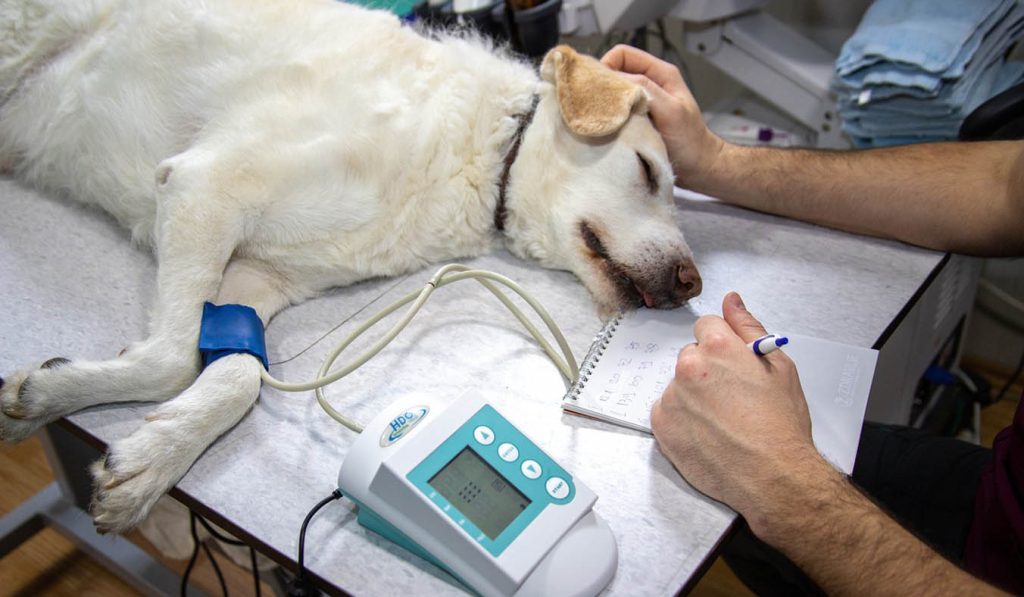“Lately, he keeps panting, even without running. At night, he makes weird gurgling sounds while sleeping. Do you think it could be a heart issue?”
That was something a friend said while we were chatting about her dog’s health. It sounds like something that only affects senior dogs, but her dog—a Corgi—is just four years old.
At first, I didn’t think much of it. After all, in most people’s minds, heart disease in pets is an “old age” issue. But after coming across more and more cases, I’ve come to realize a surprising truth: the incidence of heart disease in dogs is rising faster than we think—and it’s becoming increasingly common in younger dogs and harder to detect.
1. The Rise of Heart Disease in Dogs: You Think It’s Rare, but It’s Not
I used to think heart disease in dogs was rare. That changed when I interned at an animal hospital. I was shocked to find that a large portion of the daily cases involved heart evaluations. Among senior dogs (aged 7 and up), nearly 1 in 5 were diagnosed with some form of heart condition.
Statistics show that heart disease affects about 10% of all dogs, but in small breeds, this number jumps to 30%. Breeds like Cavalier King Charles Spaniels, Poodles, Pomeranians, and Maltese are particularly at risk. Large breeds like Dobermans and German Shepherds have a lower incidence but progress faster and face greater danger once diagnosed.
What’s more alarming is that many dogs are diagnosed when the disease has already reached a moderate or advanced stage. Why? Because early symptoms are often subtle or absent, and most of us don’t proactively check their heart health.
2. What Causes Heart Disease in Dogs? It’s Not Just About Aging
It’s a common misconception that heart disease is a condition of the elderly. In truth, many other factors are at play. Here are some key culprits that could be quietly impacting your dog:
1. Breed-Specific Predisposition
Some breeds are genetically prone to heart disease. Small breeds often suffer from valvular heart disease (especially mitral valve degeneration), while larger breeds are more likely to develop dilated cardiomyopathy (DCM). These aren’t problems you can prevent by simply feeding them well—they’re written in their DNA.
2. Poor Diet, Especially “Grain-Free” Formulas
The grain-free dog food trend took off a few years ago—and I once followed it too. But in 2018, the U.S. FDA issued a warning, noting that some grain-free foods were linked to DCM in dogs. These foods often use peas, lentils, and potatoes in place of grains, which can interfere with taurine synthesis—a critical amino acid for heart function.

3. Obesity and Lack of Exercise
Overfeeding and under-exercising can quickly lead to weight gain. Extra weight puts significant stress on the heart—especially for flat-faced breeds like French Bulldogs and Pugs, who already struggle with breathing and are high-risk for cardiac issues.
4. Chronic Stress or Unstable Environment
Though dogs can’t speak, chronic stress affects their cardiovascular health just like in humans. Living in noisy, anxious, or unpredictable settings—or facing frequent separation or fear—can lead to chronic stress, which negatively impacts heart function over time.
3. Early Warning Signs of Heart Disease in Dogs: Hidden in Everyday Moments
What makes heart disease particularly dangerous is that its early symptoms are subtle. But small behavioral and physical changes may already be whispering, “Pay attention.”
1. Altered Breathing Patterns
Healthy dogs breathe 15–30 times per minute at rest. If your dog pants heavily while lying down or pants after minor activity, that’s a red flag.
I once tracked a dog’s nighttime breathing and found it exceeded 40 breaths per minute. Initially, we blamed the heat—until a vet diagnosed early-stage heart failure.
2. Coughing, Especially When Lying Down or in the Morning
Dog coughs are often misunderstood as signs of a cold. But in many cases, an enlarged heart is pressing on the trachea. You might notice dry, hacking coughs—often more frequent in the early morning or while lying flat.
3. Fatigue and Lack of Interest in Walks
If your once-energetic dog is now reluctant to go for walks, don’t dismiss it as laziness. It may be that their heart can’t pump blood efficiently, resulting in decreased stamina.
4. Loss of Appetite and Weight
In the mid-stages of heart disease, dogs may eat less and lose weight. This isn’t picky eating—it’s likely due to poor circulation affecting gut function.
5. Enlarged Abdomen and Slow Movements
In cases of advanced heart failure, some dogs develop abdominal fluid buildup (ascites). They may have a swollen belly, struggle to move, and show signs of overall physical decline.
4. Diagnosis and Screening: “Looking Healthy” Is Not Enough
You can’t detect heart disease just by looking at your dog—proper screening is essential. I recommend incorporating heart checks into your dog’s annual vet visits, especially once they turn four.
Recommended tests include:
- Chest X-rays – to observe heart size and detect possible fluid in the lungs
- Echocardiogram (Heart Ultrasound) – the gold standard, showing heart structure and valve function
- Electrocardiogram (ECG) – to detect abnormal rhythms
- Blood pressure and oxygen tests – to assess overall cardiovascular health
- BNP blood test – measures proteins that can indicate early heart failure (available at some clinics)
If heart disease is detected early, treatment plans can be tailored to your dog’s condition, including medications, dietary changes, and lifestyle management.
5. How to Prevent Heart Disease in Dogs: Daily Care Matters
Although some cardiac issues can’t be entirely prevented, there are proactive steps you can take to help your dog live longer and healthier.
1. Balanced Diet and Nutrient Support
- Limit sodium and fats – avoid salty treats like cured meats and cheese
- Supplement wisely – nutrients like taurine, L-carnitine, and CoQ10 support heart function
- Choose high-quality, balanced food – avoid extreme or poorly formulated diets
2. Moderate Exercise
Gentle daily walks (about 20–30 minutes twice a day) are ideal. Avoid intense running or jumping, especially for high-risk breeds.
3. Weight Management
Use Body Condition Scoring (BCS) to track ideal weight. You should be able to feel their ribs and see a slight waist.
4. Stress Reduction
Stick to a routine schedule, maintain a familiar environment, and spend quality time together. Avoid frequent moves, extended solitude, or yelling.

5. Regular Vet Checkups
Starting at age four, include heart ultrasounds and blood tests annually. After age seven, consider biannual checkups, especially for small breeds or those genetically prone to heart issues.
6. Racing Against Time: A Diagnosis Isn’t the End
A heart disease diagnosis isn’t a death sentence—it’s the beginning of a new management phase. I’ve seen many dogs with moderate heart disease live five or more years with the right care.
Medications like Pimobendan and Benazepril are commonly used and generally well-tolerated. What matters most is how committed owners are to consistent treatment, daily routines, and emotional support.
As I always say:
“A dog with heart disease doesn’t need panic. It needs rhythm.”
Your Dog Can’t Say “My Heart Hurts,” but You Can Learn to Understand
Many owners only discover their dog has heart failure after a collapse. It’s not that your dog never told you—they just did so in a different language.
When they panted, you thought they were hot.
When they coughed, you assumed it was a cold.
When they didn’t want to walk, you thought they were just old.
But every little “off” moment could be their way of saying:
“I’m struggling.”
Heart disease is not just for old dogs. Don’t ignore irregular heartbeats, fast breathing, or unexplained fatigue. The earlier you act, the more time you can share together—healthily, happily, and heartfully.



